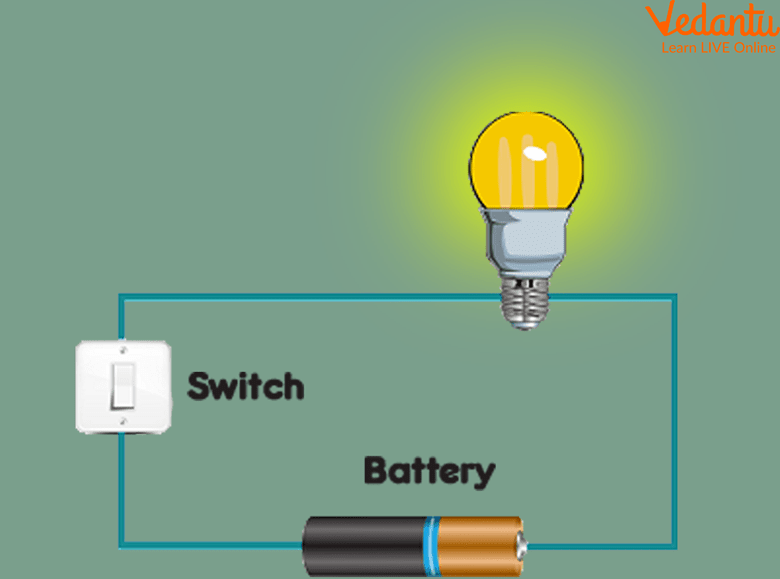
More commonly, though, when we speak of electric current, we mean the more controlled form of electricity from generators, batteries, solar cells or fuel cells. Therefore, the current flowing through the wire is said to be one ampere, if one coulomb of a charge flows per second through a section of the wire. To gain a deeper understanding of what an electric current is and how it behaves in a conductor, we can use the water pipe analogy of electricity. Certainly, there are some limitations but they serve as a very basic illustration of current and current flow. A river with a lot of fast flowing water is said to have a strong current, the same of electricity. A cable with a lot of electrons flowing also has a high current.
You shouldn’t touch electrical equipment with wet hands! Watch the video to know why?
If we open the valve on one end to let water into the pipe, we don’t have to wait for that water to make its way all the way to the end of the pipe. We get water out the other end almost instantaneously because the incoming water pushes the water that’s already in the pipe toward the end. This is what happens in the case of electrical current in a wire. The conduction electrons are already present in the wire; we just need to start pushing electrons in one end, and they start flowing at the other end almost immediately.
Drift Speed
- Particles called electrons come together, and the number of electrons flowing each second is the current.
- Schematics use standardized symbols to represent the components in a circuits and solid lines to represent the wires connecting the components.
- Despite being the ratio of two scalar quantities, current density is a vector.
- As is the usual case, when a quantity is introduced in The Physics Classroom, the standard metric unit used to express that quantity is introduced as well.
These regions may be initiated by field electron emission, but are then sustained by localized thermionic emission once a vacuum arc forms. These small electron-emitting regions can form quite rapidly, even explosively, on a metal surface subjected to a high electrical field. Vacuum tubes and sprytrons are some of the electronic switching and amplifying devices based on vacuum conductivity. The distance that an individual electron can move between collisions with atoms or other electrons is quite small. The electron paths thus appear nearly random, like the motion of atoms in a gas.

Electric Current Examples
Thus a continuous power input is required to keep a current flowing. An exception, of course, is found in superconductors, for reasons we shall explore in a later chapter. Superconductors can have a steady current without a continual supply of energy—a great energy savings. In contrast, the supply of energy can be useful, such as in a lightbulb filament.
Direct current and alternating current
Electric current is the average rate of flow of electric charge (i.e., charge per unit time) past a point in space. This charge is carried by electrons moving through a wire in an electric circuit. The higher the number of electrons moving past this point per second, the greater the magnitude of the current. Electric charge flow occurs readily in substances classified as conductive materials, while it is impeded in those known as insulators. In a metal wire such as a copper wire, for example, it is possible to create a potential difference across the ends of the wire, causing a flow of charge and creating a current.
Therefore, if there is a loop with a capacitor, it can be treated as « open » (essentially as if the wire were not connected there, and loop rules as such would apply. To further illustrate this distinction between drift speed and current, consider this racing analogy. Suppose that there was a very large turtle race with millions and millions of turtles on a very wide race track. current electricity definition Turtles do not move very fast – they have a very low drift speed. Suppose that the race was rather short – say 1 meter in length – and that a large percentage of the turtles reached the finish line at the same time – 30 minutes after the start of the race. In such a case, the current would be very large – with millions of turtles passing a point in a short amount of time.
The circuit includes an energy source (a battery, for instance) that produces voltage. Without voltage, electrons move randomly and are undirected; hence current cannot flow. Voltage creates pressure on the electrons, which channelises them to flow in a single direction. Today at the flick of a switch, turn of a knob or the push of a button, we have instant power. In this article, let us learn and find how electric current has revolutionised modern-day living. It is one of the important discoveries that helped us transform our way of living.
Electric current is the rate at which electric charge flows past a point on the electric circuit. Water current is the rate at which water flows past a point on the water circuit. As such, current is analogous to the number of gallons of water flowing into, along, and out of a slide per unit of time. The picture of charge flow being developed here is a picture in which charge carriers are like soldiers marching along together, everywhere at the same rate. Their marching begins immediately in response to the establishment of an electric potential across the two ends of the circuit. There is no place in the electrical circuit where charge carriers become consumed or used up.
